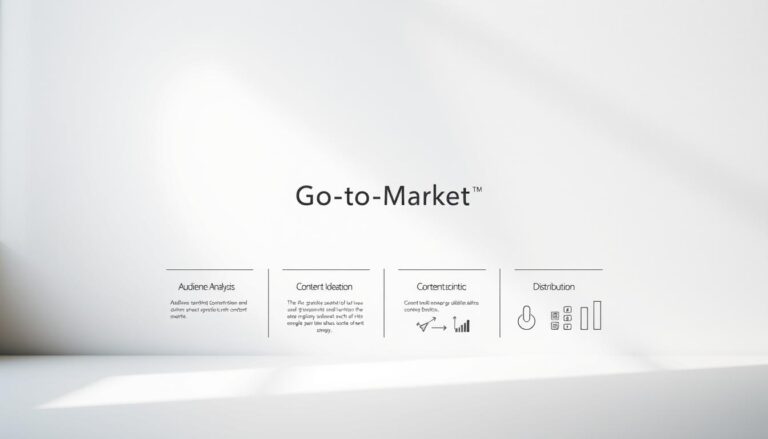In the digital age, businesses seek new methods to move ahead. Predictive sales analytics is key for revenue growth. This technology predicts sales trends and customer behavior. By using predictive analytics, companies can create data-driven sales strategies. They can also improve marketing and build strong sales frameworks.
Predictive analytics helps sales teams make better decisions. It also enables the creation of personalized customer experiences. This is vital to stay ahead in today’s market. Pairing predictive analytics with systems like CPQ enhances the sales process. Companies like SixtySixTen offer such integrations. This leads to efficient product configurations and pricing. Thus, it helps in generating personalized quotes that boost revenue growth.
Key Takeaways
- Use predictive sales analytics to keep more valuable customers by reducing churn.
- Data-driven sales strategies increase conversion rates through better lead scoring.
- Predictive analytics improve production efficiency, avoiding supply chain issues.
- Understanding customer expectations through analytics can enhance satisfaction.
- BigCommerce and Google BigQuery use analytics for dynamic pricing and targeted marketing.
- Predictive lead scoring by analytics saves time and improves sales.
What is Predictive Sales Analytics?
Predictive sales analytics use advanced tools to improve business results. They analyze sales data to find valuable insights. This means looking at past sales to guess future trends and what customers will want. The goal is to help companies plan better, be more efficient, and make more money.
Definition and Importance
This approach combines analyzing sales data and using models to guess future sales. It uses machine learning to predict sales trends and what customers will like. It also helps find possible problems before they happen. Predictive analytics is more than making guesses. It helps companies make decisions based on real data. This can greatly improve profits and market position.
Key Components of Predictive Analytics
Effective predictive sales analytics have key parts. Data collection is one, where software gathers info from different customer interactions. Then, machine learning algorithms study this data to find patterns.
This process helps make business forecasts more accurate. Lastly, visualization tools make it easy to understand these insights. This allows leaders to make smart decisions quickly.
Here is a table showing how various predictive models have improved sales forecasts:
| Technique | Description | Effectiveness |
|---|---|---|
| Random Forest | Uses multiple decision trees to improve predictive reliability and control over-fitting. | Highly effective for diverse data sets. |
| K-Means Clustering | Partitions data into K distinct clusters based on attributes to better target customers. | Useful for market segmentation and customer insights. |
| Gradient Boosted Model | Builds an additive model in a forward stage-wise fashion; it allows for optimization of arbitrary differentiable loss functions. | Great for handling large datasets effectively. |
Thanks to these advanced methods, companies like Showroomprive have become much better at predicting sales and customer behavior.
How Predictive Sales Analytics Works
The journey starts with gathering sales insights. This step is followed by analyzing the data using advanced predictive analytics. These methods make analyzing sales data easier. They also help businesses make smarter strategic choices.
Data Collection Methods
The foundation of predictive sales relies on gathering both internal and external data. Internal data includes things like transactions and customer talks. External data looks at market trends and what competitors are doing. Using AI tools along with CRM systems, email, and video chat makes collecting data wide-ranging. This way, the flow of info needed for predictive analytics modeling is smooth.
Data Processing Techniques
After gathering data, the next step is predictive analytics data processing. This uses AI algorithms and learning models to look at past sales data for insights. Methods such as linear regression and time series analysis help spot sales trends. They make predicting sales and customer behavior easier.

What’s cool about these techniques is they get better over time. As more data comes in, the forecasts get sharper. This makes predictive sales insights not just about guessing the future. It’s also about learning from the past.
| Feature | Impact on Sales Forecast |
|---|---|
| Predictive lead scoring with AI | Improves prioritization of high-conversion leads, potentially increasing closed deals by 10-15% |
| Historical and real-time data integration | Enhances forecast accuracy; adapts to new market trends |
| Advanced algorithm application | Identifies intricate patterns in sales data, aiding strategic decision-making |
| CRM and automation tools synthesis | Streamlines data management, saving time and improving operational efficiency |
Through top-notch predictive analytics modeling, businesses in finance, retail, and manufacturing can foresee market changes. They can also tweak their sales tactics to match these future trends well.
Benefits of Predictive Sales Analytics
Predictive sales analytics transform businesses in big ways. This method uses data to guess future sales trends. It also helps tailor talks with customers using deep analysis of their info.
Enhanced Decision-Making
Predictive analytics helps firms make better sales decisions. With it, organizations react smarter to market changes and customer needs. This means a sales approach that’s more personal and informed.
Improved Forecast Accuracy
Tools in predictive analytics give very accurate sales forecasts. They help companies predict market trends, manage inventory, and set smart sales goals. This boosts efficiency and profits.
Increased Customer Insights
Predictive sales analytics digs deep into customer behavior. It gives insights that help create focused marketing plans. Businesses can send personalized messages and suggestions that really speak to each customer.
In conclusion, using predictive sales analytics makes companies more efficient and improves customer happiness. With these tools, businesses make smarter choices and stand out in a data-focused market.
Tools for Predictive Sales Analytics
The field of predictive sales analytics uses advanced tech to guess future trends. This includes predictive analytics software and predictive modeling solutions. Businesses get better at analyzing data, making smarter decisions, and improving sales plans.
Popular Software Solutions
Many top software solutions stand out, each with special features for different needs. SAP Analytics Cloud and Qlik offer easy-to-use setups and strong predictive sales insights. Their costs are $432 yearly and $20 monthly per user. They’re great for companies wanting to use sales data analysis tools without big initial costs.
Alteryx, RapidMiner, and IBM SPSS are known for deeper analytics. They’re better for complex predictive modeling solutions like using machine learning and AI. To know their prices, you have to ask them. These tools help automate tasks and create precise data models.
Integrating with CRM Systems
Linking predictive analytics software with CRM systems is key. It makes data across platforms work together better. This boosts the accuracy of automated sales predictions. It gives sales teams useful insights right in their CRM. This makes workflows smoother and improves strategies for engaging customers by offering deeper insights and predicted behaviors.
| Software | Pricing | Special Features |
|---|---|---|
| Alteryx | $5,195 per user/year | Advanced analytics, customizable models |
| RapidMiner | Contact for pricing | Machine learning, AI capabilities |
| IBM SPSS | Contact for pricing | Comprehensive predictive modeling |
| SAP Analytics Cloud | $432 per user/year | Forecasting models, business simulations |
| Qlik | $20 per user/month | Automated tasks, natural language processing |
Using these advanced tools and pairing them with CRS systems can change how companies look at sales data. So, predictive sales analytics have become key in today’s business world.
Implementing Predictive Sales Analytics
The journey of implementing predictive sales analytics changes how businesses work. It uses machine learning for sales and strategic data insights. This helps predict customer actions and sales trends better. It boosts the ability to foresee sales. This also matches well with big business goals for more revenue growth.
Steps to Get Started
To start your predictive analytics strategy, good planning is crucial. First, make your business goals clear to match the analytics right. Gathering strong data quality is key for a trustworthy model. Then, clean and organize the data. Lastly, pick the right tools that fit with what you already use.
Common Challenges
There are big benefits, but also big predictive analytics challenges. Poor data quality can mess up results. This makes forecasts and strategies less reliable. Also, it’s important to be clear about what the business wants. This makes sure the analytics helps the company’s aims. Not having the right skills in-house is another problem. It might mean you need training or outside help.
| Aspect | Impact | Statistic |
|---|---|---|
| Predictive Model Accuracy | Increases Sales Close Rates | 30% increase in close rates |
| Customer Insight | Optimizes Marketing & Sales Strategies | 50% more conversions for tech startups post-demo |
| Resource Allocation | Enhances ROI and Efficiency | 15-20% improvement in ROI from data-driven decisions |
| Sales Forecasting | Improves Prediction Reliability | More accurate forecasts by analyzing market trends |
| Market Innovation | Facilitates Quick Adaptation to Changes | Enables quick response to market dynamics |
Knowing these common challenges helps firms use predictive sales analytics well. This turns potential problems into chances for success. It also sparks sales innovation.
Case Studies of Successful Implementation
Exploring predictive analytics case studies shows how data transforms business success. These studies reveal how predictive analytics implementation optimizes sales and boosts revenue growth.
Company A: A Growth Story
A global engineering and technology company works in over 60 countries with more than 440 subsidiaries. It’s a beacon of sales data analysis success. By using predictive analytics, the company better managed its stock and improved how it makes products. This led to a noticeable revenue growth.
Company B: Transforming Sales Strategy
A well-known Fortune 500 Industrial Supply Company sells over 1.6 million products. It found success in data-driven sales strategies using predictive analytics. This made it easier to predict demand and keep the right amount of stock. This strategy not only made operations smoother but also increased sales, making it a great example of sales success.
Predictive analytics has been key in many fields. For instance, retailers like Walmart look into past promotions and customer behavior to improve future sales. Meanwhile, energy companies like Shell predict energy needs to better manage resources.
| Industry | Key Focus | Results |
|---|---|---|
| Manufacturing | Demand Forecasting | Enhanced Inventory Management |
| Pharmaceuticals | Patient Adherence Prediction | Improved Treatment Success |
| Retail | Buying Behavior Analysis | Optimized Promotional Strategy |
| Financial Services | Risk Modeling | Better Credit Decisions |
| Utilities | Energy Demand Forecasting | Resource Allocation Efficiency |
These predictive analytics case studies show the importance of advanced data tools in business. They provide a guide for firms wanting to use predictive analytics to improve.

Future Trends in Predictive Sales Analytics
The future of predictive sales analytics is shaping up fast, thanks to AI for sales and machine learning advancements. Companies are diving into predictive modeling solutions to better predict what customers want. This means they can be more precise in meeting market demands and understanding consumer behaviors.
AI and Machine Learning Impact
AI for sales and machine learning advancements are expanding the limits of predictive analytics. These technologies not only make sales forecasts more accurate. They also speed up how fast businesses can make decisions. With AI, analyzing huge amounts of data and spotting trends happens swiftly. This turns predictive analytics into a key tool for business growth.
Evolving Consumer Behavior
Grasping and forecasting how customers behave needs smart behavior prediction models. These models must keep up with quick changes in the market. Predictive analytics is crucial for adapting marketing and sales approaches. By doing so, companies can match up with new consumer expectations and tastes. This boosts customer happiness and loyalty.
| Feature | Benefits | Tools |
|---|---|---|
| Enhanced Accuracy | AI algorithms offer superior precision in sales predictions. | 6sense |
| Real-Time Forecasts | Instant data analysis allows swift strategic adjustments. | AI-based systems |
| Improved Performance | Optimized resource allocation and focused marketing efforts. | Dynamic predictive models |
| Strategic Decision-Making | Proactive adaptations based on current market data. | Machine learning tools |
| Consumer Trend Analysis | Forecasts adjust with shifting consumer behaviors and preferences. | Behavior analysis algorithms |
Adding advanced predictive modeling solutions into business operations marks a big change. It leads to a more personalized, data-centric strategy that could set new standards in the industry. The growth of AI is key in this evolution. So, keeping an eye on AI developments is crucial for any plan looking ahead.
Measuring the Success of Predictive Sales Analytics
In today’s business world, knowing how predictive analytics boosts revenue is key. Businesses use KPIs to see if their analytics efforts are working well. By checking data like conversion rates and growth, companies can stay on track with their goals.
These metrics show how they’re doing now and what they might do next. It’s about keeping up with goals and getting better over time.
Key Performance Indicators (KPIs)
Knowing how well predictive sales work depends on clear measurements. Companies look at many metrics, like sales by region and yearly contract values. This helps them know if they’re succeeding.
In a competitive market, it’s crucial to track each salesperson’s performance. Also, knowing how many quotes turn into sales shows if the sales process is healthy. With these insights, companies can plan their growth better.
Adjusting Strategies Based on Data Insights
Predictive analytics shape sales strategies in today’s fast-paced business scene. It’s not just guesswork anymore. It’s about using data from the past to make smart choices.
Even with challenges like data quality, combining AI with predictive analytics looks promising. With deep insights into past sales and customer trends, businesses can make smarter decisions. They become more agile, seizing new opportunities for growth.
FAQ
What is Predictive Sales Analytics?
Predictive sales analytics uses past data, algorithms, and learning techniques to forecast sales. It helps make smart decisions for better revenue by improving sales approaches and predicting sales.
What are the key components of predictive analytics in sales?
Main parts include data collection, machine learning, analysis tools, and visualization methods. They identify patterns and predict sales, offering insights for smart sales choices.
How do data collection methods impact predictive sales analytics?
Good data collection creates a solid basis for predictive models. By gathering broad sales data, companies can better foresee sales trends.
What techniques are applied during data processing in predictive sales analytics?
Techniques like cleaning, preprocessing, statistical analysis, and mining refine data. This ensures accuracy and uncovers patterns for forecasting and decision-making.
What are the benefits of predictive sales analytics for decision-making?
It offers deep insights into sales, customer actions, and market trends. This results in better sales strategies, targeted marketing, and foreseeing customer needs, which boosts revenue.
How does improved forecast accuracy benefit businesses?
Better forecasts help anticipate trends and customer actions. This aids in managing inventory, setting sales goals, and using resources well, lowering costs and raising profits.
How does predictive analytics provide increased customer insights?
By studying customer actions and preferences, it helps tailor marketing, product recommendations, and pricing. This leads to a more personal customer experience and loyalty.
What are some popular predictive analytics software solutions?
Various software options offer advanced analytics, scenario modeling, and real-time insights. These tools help improve sales processes and support revenue growth.
Why is CRM integration important in predictive sales analytics?
CRM integration automates sales data capturing and analysis. It improves customer journey understanding, speeds up sales, and aids in effective upselling and cross-selling.
What are the initial steps to implementing predictive sales analytics?
Start by setting clear goals, gathering and processing data, choosing analytical tools, and training models. This aligns with business aims for best results.
What common challenges might businesses face with predictive analytics?
Challenges include data quality, clear goals, and needing expertise. Overcoming these needs strong data handling, clear objectives, and proper training or skills in analytics.
Can you provide an example of a successful predictive sales analytics case study?
Although specific companies are not named, studies show how predictive modeling and data analysis have boosted decision-making, streamlined operations, and lifted revenue.
How are AI and machine learning influencing future trends in predictive sales analytics?
AI and machine learning advancements are shaping predictive sales analytics. They enhance forecasting and personalize customer experiences, changing sales strategies and revenue management.
How should businesses adapt to evolving consumer behavior using predictive analytics?
Companies need advanced models to catch up with changing consumer trends. Knowing these trends helps customize offers and sales methods for market needs.
What are the key performance indicators for measuring the success of predictive sales analytics?
Success is measured by conversion rates, customer value, and revenue growth. These indicators check and refine the impact of analytics strategies.
Why is it essential to adjust sales strategies based on predictive analytics data insights?
Using data insights to tweak strategies keeps sales and marketing efforts effective. It helps businesses adapt to market changes, ensuring ongoing growth.



